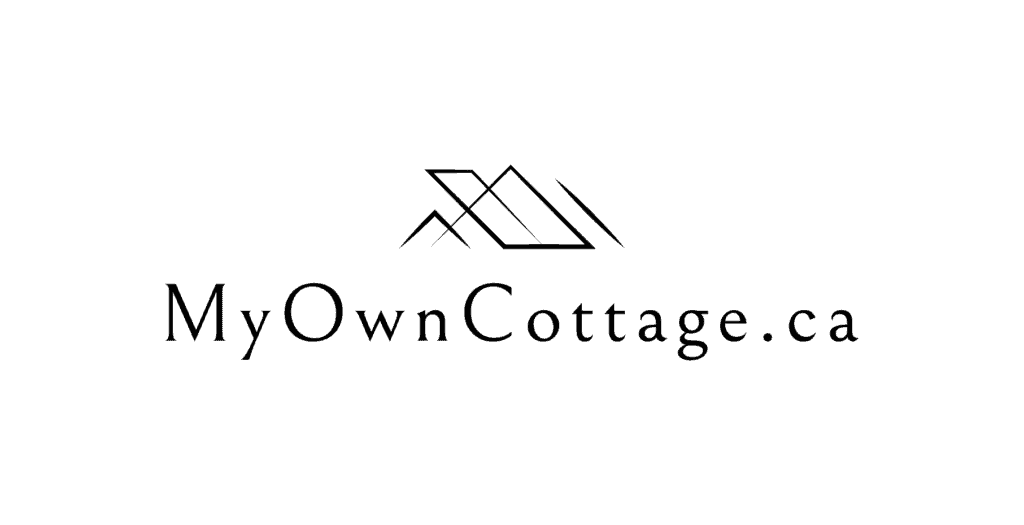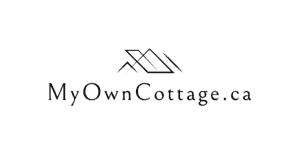Cost Estimation for Three-Bedroom House Plans
Get a detailed cost estimation for three-bedroom house plans, including construction, materials, and design factors.
Plan your dream home with budget-friendly prefab options!
Home » Cost Estimation for Three-Bedroom House Plans
Real Costs for Three-Bedroom House Plans
Building a home is a significant financial investment, and understanding the cost of constructing three-bedroom house plans is crucial for effective budgeting.
The overall construction cost is influenced by various factors, including square footage, materials, labor, and permits.
Additionally, architectural styles, structure types, and foundation choices can further impact pricing.
A Comprehensive Guide With Cost Breakdowns For You!
Whether you’re a first-time homebuyer, a young family, or an empty nester looking for the perfect home.
This guide will help you estimate costs and explore money-saving strategies.
Cost Estimates for Building a Three-Bedroom House
The overall expense depends on several variables, including location, materials, labor, and additional expenses such as permits and utilities.
For example, opting for a low budget modern 3 bedroom house design that streamlines cost estimation can help you plan more effectively.
Below, we break down the estimated costs to build a three-bedroom house and explore the advantages of prefab home options.
1. Specific Cost Estimates
Building costs can fluctuate based on economic conditions, material availability, and contractor pricing.
However, as of 2025, here are the average cost estimates for constructing a three-bedroom house in Ontario:
- Low-End Estimate: $155 per square foot
- High-End Estimate: $285 per square foot
- Average-Sized Three-Bedroom Home (1,500 sq. ft.):
- Low Estimate: $232,500
- High Estimate: $427,500
These figures exclude the cost of purchasing land, which can vary significantly based on location.
2. Cost Breakdown Table
To help understand the full scope of building expenses, here’s a detailed cost breakdown for constructing a three-bedroom house in Ontario:
| Expense Category | Estimated Cost Range |
|---|---|
| Land Acquisition | $50,000 – $500,000+ (varies by location) |
| Construction Materials | $100,000 – $250,000 |
| Labor Costs | $80,000 – $200,000 |
| Building Permits | $5,000 – $15,000 |
| Architectural & Design Fees | $8,000 – $20,000 |
| Utilities & Hookups | $10,000 – $30,000 |
| Interior Finishes | $30,000 – $100,000 |
| Landscaping & Driveway | $5,000 – $25,000 |
| Total Estimated Cost | $288,000 – $1,140,000+ |
The exact cost will depend on the location, the complexity of the design, and the choice of materials.
Readers need to consult with professionals for precise figures.
3. Three-Bedroom Prefab Home Options
If you’re looking for a more cost-effective alternative, prefabricated homes can significantly reduce expenses while offering quality and efficiency.
Prefab homes are built off-site and then assembled on location, reducing labor and material waste.
Here’s what to expect in terms of prefab home costs in Ontario:
- Basic Model: $100 – $150 per square foot
- Mid-Range Model: $150 – $200 per square foot
- High-End Model: $200 – $250 per square foot
- For a 1,500 sq. ft. home:
- Basic Model: $150,000 – $225,000
- High-End Model: $225,000 – $375,000
So… Why Choose a Prefab Home?
✔ Faster Construction – Prefab homes can be built in months instead of years.
✔ Lower Labor Costs – Less on-site work reduces labor expenses.
✔ Energy Efficiency – Many prefab homes come with eco-friendly features.
✔ Fixed Pricing – Unlike custom builds, prefab homes often have set pricing, minimizing unexpected costs.
Pro Tip: Understanding the cost estimation for three-bedroom house plans can help you budget wisely and choose the perfect prefab home design!
One that fits your unique needs and lifestyle.
For enthusiasts, you may also want to consider maximizing savings with DIY three bedroom house plans.
Factors Affecting the Cost of Three-Bedroom House Plans
Carefully customizing three bedroom house plans is a smart strategy for cost estimation.
Effectively, it allows homeowners to tailor design elements that optimize construction expenses while ensuring modern functionality and style.
Square Footage and Layout
The size and square footage of your home significantly impact the cost.
A larger home with additional bedrooms, a primary suite, or a guest room will require more materials and labor, increasing overall expenses.
Small sq. ft. plans are more affordable and may be ideal for budget-conscious buyers.
In contrast, larger three-bedroom home plans offer more flexibility but come at a higher price.
Architectural Styles and Structure Types
The choice of architectural style also affects the budget.
A Cape Cod or Contemporary Design may cost more due to intricate detailing, while Simple House Plans are generally more affordable.
Likewise, structure types such as wood-framed, concrete, or steel-framed homes come with different price tags.
This largely depends on material availability and labor costs.
Foundation Types
The foundation type plays a crucial role in total expenses.
Crawl spaces, daylight basements, and slab foundations vary in cost.
With basements typically being the most expensive due to excavation and waterproofing requirements.
If budget is a concern, opting for a crawl space or slab foundation can help save on initial expenses.
Bedroom Layout and Living Space
The arrangement of bedroom designs and living space influences both cost and functionality.
A well-planned master suite, open floor plan, and split-bedroom layout provide comfort while optimizing construction costs.
Homebuyers must balance extra space with affordability, ensuring there is enough room for a growing family without unnecessary additions.
Garage Type and Outdoor Living Areas
A Garage Plan is another cost factor to consider.
A single-story home with an attached garage is generally more cost-effective than a detached or multi-car garage.
Outdoor living areas, including a rear porch, outdoor fireplace, or patio, add appeal.
However, they also increase the total sale price of the home.
Cost Breakdown: Materials, Labor, and Permits
Materials
Materials account for a substantial portion of construction costs.
High-end materials such as hardwood flooring, granite countertops, and energy-efficient windows increase costs.
While budget-friendly options like laminate flooring and vinyl siding can help cut expenses.
Energy-efficient upgrades may require a higher initial investment but can lead to long-term savings on energy costs.
Labor Costs
Labor costs vary based on location, home size, and design complexity.
A simple single-story home will require less labor compared to a multi-family or larger home with complex structures.
Hiring skilled professionals for plumbing, electrical work, and roofing will also contribute to the total cost.
Permits and Regulatory Fees
Construction permits and local fees vary by region.
Buyers should research their local regulations to estimate costs accurately.
In some areas, permits for electrical, plumbing, and structural work can add thousands to the overall construction cost.
Comparing the Cost of Custom vs. Pre-Designed
Custom Home Design With Three-Bedroom House Plans
A Custom Home Design allows homeowners to create a perfect home tailored to their preferences, but this comes with higher costs.
Custom homes require professional architects, extensive planning, and unique materials.
All of which can make them significantly more expensive than pre-designed plans.
Pre-Designed House Plan Collection
Pre-designed house plan collections offer an affordable alternative to custom builds.
Best-selling and affordable house plans provide well-structured layouts with cost-efficient designs, helping buyers save money without sacrificing quality.
These plans often feature optimized sq. ft. house plans, ensuring a practical use of space.
Small House Plans vs. Larger Homes
For budget-conscious buyers, small house plans are a cost-effective option.
They minimize construction costs while still offering a functional layout.
Larger homes, while offering more space for a growing family, require higher material and labor costs, making them less affordable for some buyers.
Multi-Family and Split-Bedroom Layouts
A multi-family home or a split-bedroom layout may be beneficial for those looking to share construction costs with another family or rent out part of the property.
These layouts optimize the number of bedroom house floor plans within a defined square foot area, offering affordability and flexibility.
Cost-Saving Tips for Budget-Conscious Homebuyers
Choose Simple House Plans
Opting for simple house plans reduces construction complexity, saving both time and money.
These designs focus on essential features while maintaining a comfortable living space.
Maximize Space with Open-Concept Design
An open-concept design eliminates unnecessary walls, making smaller homes feel more spacious.
This reduces construction costs while enhancing the family room, dining area, and Great Room flow.
Smart Storage Solutions
Investing in efficient storage space solutions like built-in cabinets and multi-functional furniture can help reduce the need for excessive square footage.
This helps you to save money on construction.
Opting for a Single-Story Home
A single-story home is typically cheaper to build than a multi-story home, as it requires less structural support.
This means fewer materials for staircases and additional floors that can otherwise prove costly.
Prioritize Essential Features
Buyers should determine whether features like a formal dining room, formal living room, or eating bar are necessary.
As eliminating non-essential areas can significantly reduce costs.
Minimize Excess Bathrooms
While having multiple bathrooms can be convenient, half bathrooms or shared bath features are more cost-effective.
In contrast, full ensuite bathrooms in every bedroom can add significantly to the overall price tag.
Best Cost-Saving Practices Listed For You:
A. Optimize Your Floor Plan
- A compact and efficient design minimizes wasted space and reduces construction costs.
- Opting for an open floor plan to eliminate unnecessary walls, reducing material and labor costs.
- Simplify your roof design—complex roof structures increase material and installation costs.
B. Choose Cost-Effective Construction Methods
- Consider prefabricated or modular homes, which are often more affordable and quicker to construct than traditional site-built homes.
- Use engineered lumber instead of traditional wood framing to reduce waste and labor costs.
- Opting for a slab foundation rather than a full basement if soil conditions permit, as this can significantly cut down excavation and construction costs.
C. Work with Local Contractors and Suppliers
- Hiring local contractors helps you save on transportation costs for labor and materials.
- Source materials from local suppliers to avoid high shipping fees.
- Get multiple quotes from different builders to compare costs before making a decision.
D. Use Durable, Budget-Friendly Materials
- Consider fiber cement siding instead of traditional wood—it’s more affordable, low-maintenance, and durable.
- Opt for luxury vinyl plank (LVP) flooring as an alternative to hardwood; it’s cost-effective and moisture-resistant.
- Use laminate or butcher block countertops instead of granite or quartz to cut down on kitchen renovation costs.
E. Buy in Bulk and Look for Discounts
- Purchase materials during off-season sales or bulk-buy discounts from wholesalers.
- Consider salvaged or reclaimed materials for certain parts of the home, such as doors, windows, or flooring, to save on costs without sacrificing quality.
F. Choose Energy-Efficient Options
- Install LED lighting and energy-efficient appliances to reduce long-term energy costs.
- Opt for spray foam insulation for better temperature control, reducing your heating and cooling bills.
- Use low-flow plumbing fixtures to cut down on water usage and utility bills.
Note: By applying these expert tips, you can make informed decisions to optimize your budget, select high-quality materials, and navigate local regulations with ease.
Whether you’re a first-time home builder or an experienced homeowner, these strategies will help you build your dream home efficiently and affordably.
Estimating the Overall Costs
Estimating the cost of three-bedroom house plans requires careful consideration of multiple factors, including square footage, materials, labor, and layout.
By choosing an affordable house plan, utilizing cost-saving strategies, and exploring pre-designed options, homebuyers can optimize their home-buying journey.
All while staying within their desired budget.
A Smarter Investment in Your Future Home
Whether you’re seeking a perfect design for a young family or a downsized option for retirement.
Planning ahead will ensure a smart investment in your future home.
To get assistance with cost estimation for three bedroom house plans, book a free consultation with us or fill out the form below.

